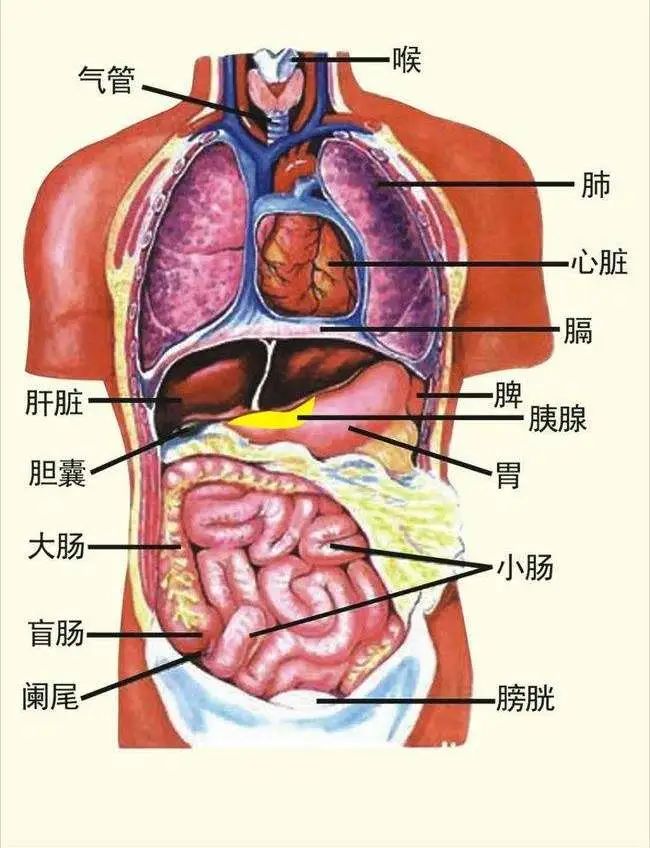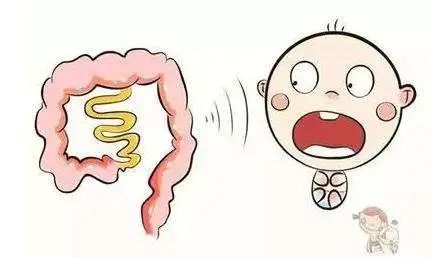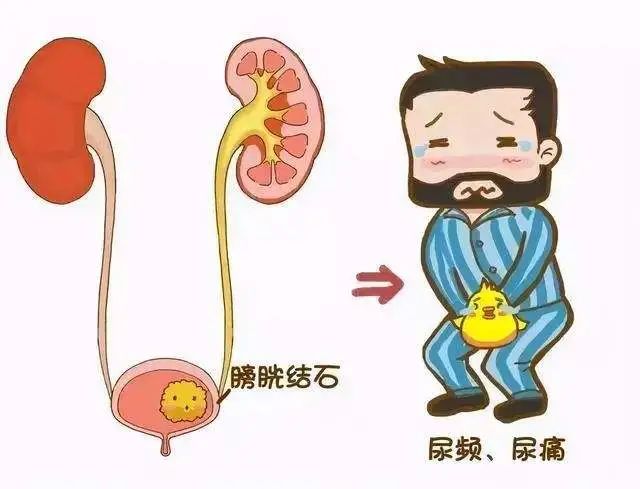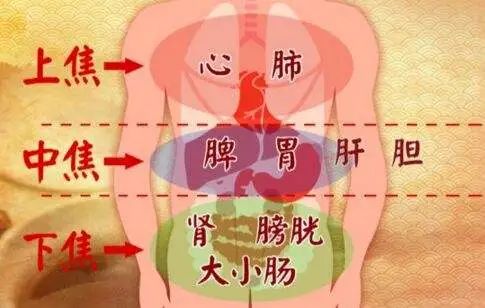

According to the “Su Wen: On the Six Fu Organs”, it states: “The six fu organs transmit and transform substances but do not store them.” The six fu organs refer to the gallbladder (dan), small intestine (xiao chang), stomach (wei), large intestine (da chang), bladder (pang guang), and san jiao (triple burner). The function of the six fu organs is to transport food and fluids, and their specific functions are as follows:
Gallbladder (Dan)

The gallbladder is attached to the liver and has the functions of storing and excreting bile, as well as regulating emotions.
① Storing and excreting bile.
The gallbladder can store bile and also excrete the stored bile into the small intestine, where bile promotes the digestion of food, thereby facilitating food digestion.
② Regulating emotions.
The gallbladder can also regulate a person’s emotions. If the gallbladder’s function is abnormal, it can easily lead to symptoms such as panic, irritability, insomnia, and vivid dreams.
Small Intestine (Xiao Chang)

The small intestine is located in the abdominal cavity. Its main function is to promote the digestion of food. Food enters the stomach, undergoes maturation, and then enters the small intestine, where further digestion occurs.
The digested food in the small intestine is mainly divided into two parts: one part consists of the nutrients from the food that are absorbed by the spleen and distributed to various parts of the body to provide energy for physiological activities; the other part consists of food residues and excess water, where the food residues enter the large intestine to be formed into feces, and excess water enters the bladder to be converted into urine. If the function of the small intestine is disrupted, it can easily lead to diarrhea, malnutrition, and other gastrointestinal dysfunctions.
Stomach (Wei)

The stomach is located below the diaphragm, connecting the esophagus and the small intestine, and has the functions of receiving and digesting food.
Food enters the body through the mouth and then passes through the esophagus into the stomach, making the stomach a natural container for food. The stomach can mature the food. After the food has been matured in the stomach, it is divided into two paths: one part enters the small intestine for further digestion, while the other part is absorbed by the spleen under its transformative action to provide energy for the body. If the function of the stomach is abnormal, symptoms such as vomiting, nausea, and stomach pain may occur.
Large Intestine (Da Chang)

The large intestine is located between the small intestine and the anus, and has the function of “transmitting up and down”; it can transform food residues into feces. The food residues in the small intestine have no nutritional value, so they enter the large intestine, which acts as a natural garbage bin—holding food residues. The large intestine first absorbs the moisture contained in the food residues, transforming them into feces, which are then expelled from the anus. If the large intestine is abnormal, diseases such as diarrhea and constipation may occur.
Bladder (Pang Guang)

The bladder is located in the lower abdomen and is connected to the urethra, with the main function of converting excess fluids and harmful substances into urine.
Under the action of the kidneys, the body’s fluids and many harmful substances enter the bladder to be converted into urine, which is then expelled from the body through the urethra. The bladder’s ability to convert excess fluids and harmful substances into urine relies heavily on the kidneys’ assistance; without the kidneys, this process cannot proceed smoothly. If the functions of the kidneys and bladder are disrupted, it can easily lead to symptoms such as difficulty urinating and urinary incontinence.
San Jiao (Triple Burner)

The san jiao is not an independent organ like the other organs; it is a summary of the functions of various organs. The san jiao includes three parts: the upper jiao, which includes the heart and lungs, primarily responsible for transporting nutrients; the middle jiao, which includes the spleen and stomach, primarily responsible for digestion and absorption of nutrients; and the lower jiao, which includes the liver, kidneys, large intestine, small intestine, and bladder, primarily responsible for excreting waste.
Contact: Kangqit Professional Skills Training School WeChat: kangqitexuexiao
Address: 264 Dacheng Street, Nangang District, Harbin (intersection of Dacheng Street and Youzheng Street)
Consultation: 0451-53635186/87531162 18246178388/15846003580
Specialties: Traditional Chinese Medicine acupuncture, adult tui na (Chinese therapeutic massage), bone setting, lactation recovery, pediatric tui na, infant care, elderly care, career guidance, folk crafts artisan, internet marketing specialist, entrepreneurship advisor, beautician, elderly health assessor, health massage therapist, tea art specialist, health management specialist, agricultural manager, e-commerce specialist, multimedia operator, psychological counselor.

